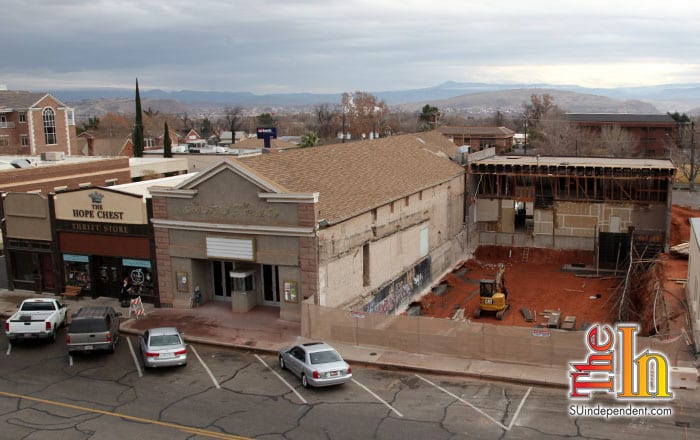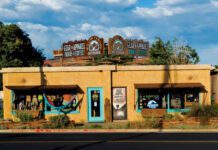
by Paul Dail
Last Wednesday, Jan. 7, the City of St. George issued two separate surveys in an attempt to identify artists or art organizations interested in utilizing the new Electric Theater facility, either on a short-term or ongoing basis. With a theater, dance studio, and six other spaces of varying sizes, many possibilities exist for how this new facility could be used.
The Electric Theater was built in 1911 and originally served as a movie house. From 2000 to 2012, the location served as a private music and event venue. In 2012, the theater and the three adjacent properties came up for sale, and the City of St. George purchased the downtown properties in an effort to preserve the historic value of the theater and create an 18,000 square-foot facility dedicated to benefiting and promoting the arts in St. George and the surrounding area.
City of St. George Community Arts and Exhibits administrator, Gary Sanders, expressed his excitement about the new Electric Theater facility.
“A little over a year ago as we were moving toward this process, we did some focus groups with local artists and organizations,” Sanders said. “We were able to ascertain some thoughts and ideas which went into the design of the building, such as what they would need or want, or what they would recommend that we create.”
With a projected opening date of late April, Sanders says they are now looking to find out who is interested in using the facility. Here is where the two surveys come into the picture. Similar in scope, one survey has been designed for individual artists and one for artistic organizations.
Questions on the survey range from asking organizations what kind of space they need for the various functions of their group—such as administrative needs versus rehearsal or performance aspects—to asking individual artists what sort of environmental factors are the most important for their personal work space—such as natural lighting or specialized plumbing or ventilation. Along the lines of such specialized structural components, Sanders said there are some current limitations, but the survey will help them determine areas for consideration as they move toward completion.
Currently, the space includes the original theater with a seating capacity of 290. Whereas the previous design was a “shotgun theater,” Sanders said the new design includes space behind the stage and off to the sides and another rehearsal/support space for the stage. Sanders said the current seating capacity makes it most likely too small to be used by such groups as the Heritage Choir, “but they have talked about perhaps creating a children’s choir … We also have a screen, and we plan on putting in a digital projector. Not necessarily the same quality as a megaplex theater but still able to show movies.”
In addition, the new facility has an approximately 1,200 square-foot dance studio/rehearsal space with a sprung floor and five other spaces ranging from 400 to 1,000 square feet which could be used for studio or instructional purposes. There is also a small space which could be used for board room meetings.
“[The new facility] could be used by artistic organizations for their offices to have a central space,” Sanders said. “Some of our groups operate out of a spare bedroom in someone’s house.”
In regards to what someone might see if they walked off the street into the new facility, Sanders said the main level will have some support space but will be mostly open.
“That’s where we envision 12 x 12 spaces for artists,” Sanders said. “At the front we would like to see some sort of gallery space, an exhibition space, a co-op gallery, or something like that … Perhaps it will be a space where you walk in and see some local artwork or artists working. Maybe you run into somebody from the Symphony or Heritage Choir, or you see students doing multimedia work. It may also perhaps serve as a downtown central box office location where you can buy tickets for any events going on in the area.”
For artists or artistic organizations interested in utilizing the space, the surveys can be accessed at the following sites:
Art organization survey: http://adobe.ly/1KigMBq
Individual artist survey: http://adobe.ly/1BE0Za2
For additional information, Gary Sanders can be reached via email at [email protected] or by calling (435) 627-4510.



